18 November, 2003
Happy Camper School
All Antarctic residents must take Snow Craft I (aka: Happy Camper School)
before being allowed to go out in the field. During this two-day course
students learn important skills necessary for working in such an extreme
environment. These include learning about potential medical hazards,
constructing emergency shelters, operating camp stoves, helicopter safety,
and operating communication radios. While the class begins in the Science
Support building, the majority of the class is held in a field site just a
few miles from "town". The field site truly made you realize that you are
in Antarctica. Located near castle rock and Mt. Aurora we could easily see
New Zealand's Scott base and had a great view of Mt. Erebus.
After learning about potential health hazards and learning how to operate
the stoves, the remainder of the day was dedicated to learning how to
build a proper shelter. First we started constructing a Quincy hut. We
piled up all of our bags and then covered them with snow. Later we dug a
hole in the mound to dig out our bags, thus creating an entrance into our
ice hut. We also learned how to properly pitch several types of tents.
Since the winds in Antarctica can be quite fierce, we learned that we must
carefully consider the placement of the door in relationship to the wind
and learned ways to ensure that the tent is securely grounded. We also
learned the importance of building a snow wall and how to build emergency
snow trenches.
After a full day of teaching us the basic skills, our instructors left us
alone for the night-confident that we now had the skills to prepare our
own supper and build appropriate shelters. In just a few hours our
classroom of individuals formed a little community. Like the Amish barn
raisings, we helped each other cut and carry blocks of ice, assemble ice
shelters, and pitch tents. A few campers eagerly built a neighborhood
kitchen/dining area big enough to hold the majority of the campers. Our
stoves provided us with boiling water needed for hot drinks and dehydrated
food, which were welcoming nourishment after a full day's work. About 11pm
our little community began to retire to their tents, trenches, and Quincy
huts for an amazing night under the sun; and truly alone in Antarctica.

All ready for Happy Camper School.
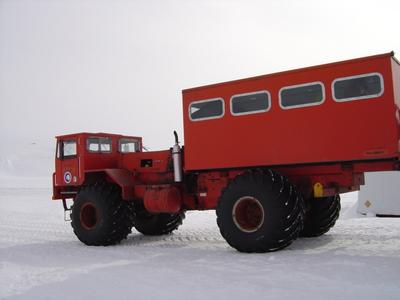
This is not your regular school bus, but then again, this is not your regular school. Why are the tires on this vehicle so big?
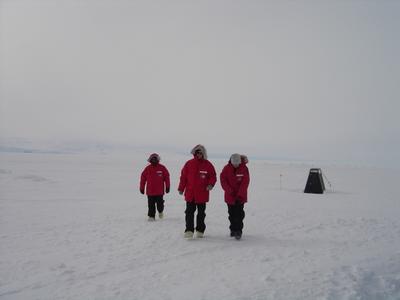
Campers walking to class. What do you think might be in that little black "hut"?
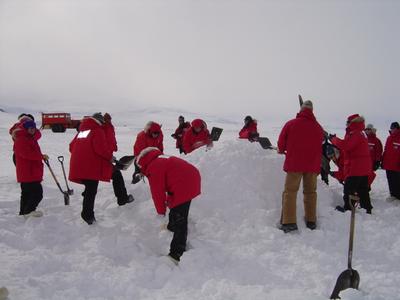
Learning to build a Quincy hut. Why might one prefer to build one of these instead on an igloo?
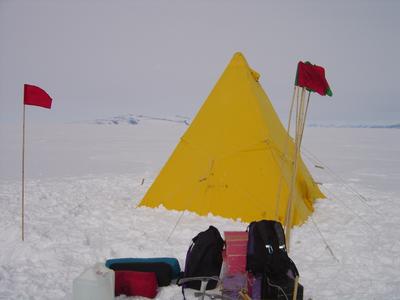
A Scott tent. How do you think it got its name? What might you do differently when pitching a tent in Antarctica verses a more temperate environment?
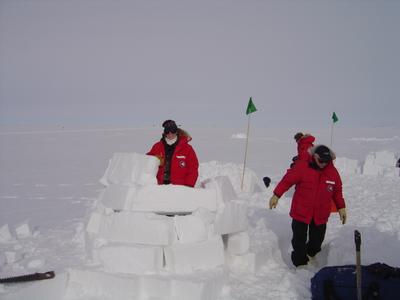
Here I am helping a fellow happy camper build an igloo.

Campers cutting blocks of snow in order to build a snow wall. Why is a snow wall important when setting up camp?

Campers cooking dinner and eating in our community kitchen/living room. Well fed campers results in happier campers. Why have we placed flags all throughout camp?
Contact the TEA in the field at
.
If you cannot connect through your browser, copy the
TEA's e-mail address in the "To:" line of
your favorite e-mail package.
|
